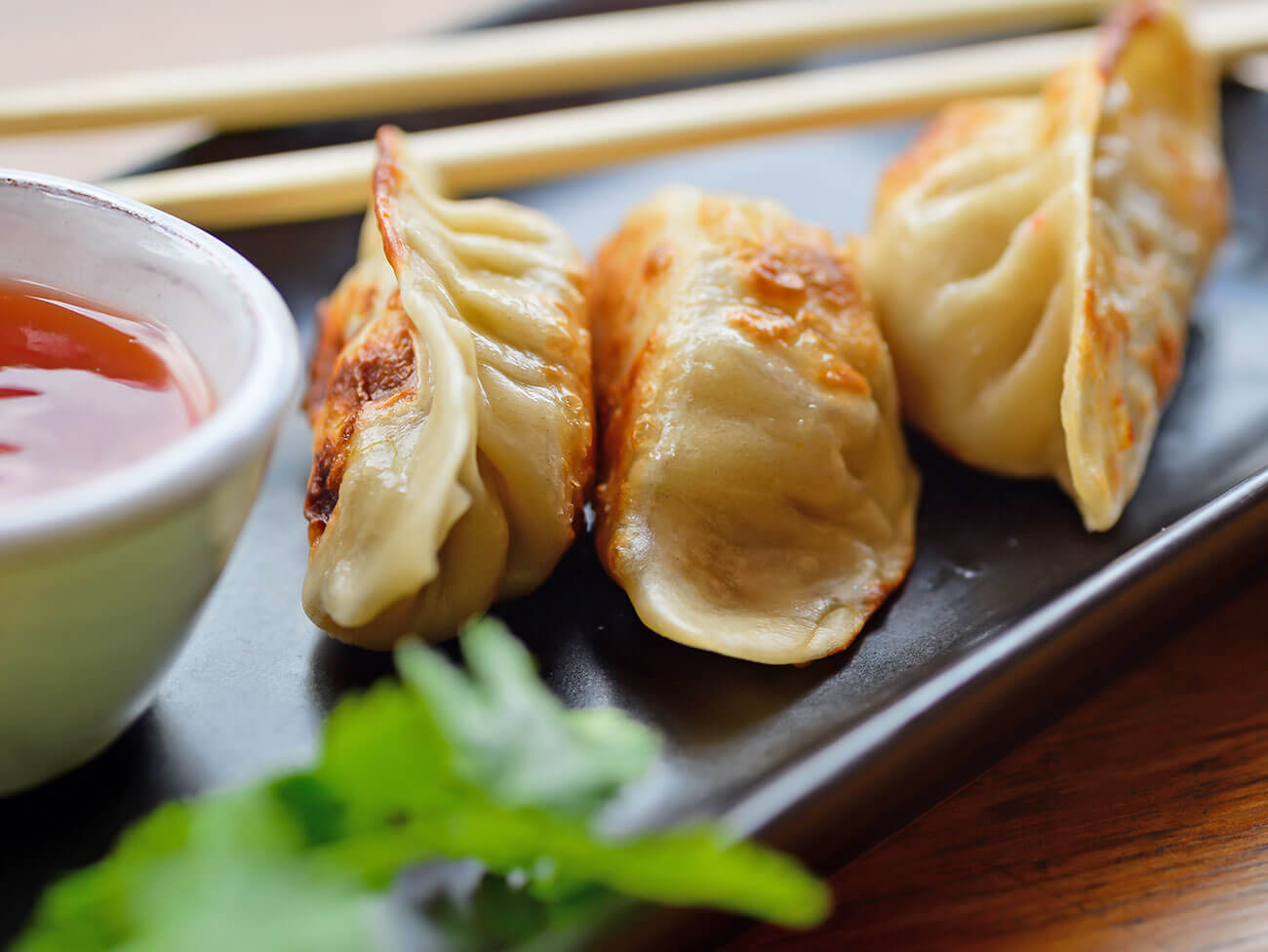Good luck dumplings for the Lunar New Year
These bite-sized treats are delicious any time of year.
Like new year observances in many cultures, Lunar New Year — also known as Chinese New Year — is a day of renewal, celebration, and rest.
Tradition dictates that no cleaning, cutting, or chopping be done on this day, so it’s a day off for home cooks.
The days leading up to Lunar New Year, however, are busy with house cleaning (sweeping away the bad luck) and preparing the foods associated with good luck and fortune in Chinese culture.
These include:
- Jiao zi, a type of Chinese dumpling shaped like the gold ingots, or gold bars, used as currency during the Ming Dynasty
- Nian gao, sweet sticky rice cakes, which symbolize the persistence needed for prosperity
- Long noodles, for longevity
- Whole fish and chicken (beak and feet included), served to ensure the completeness of a family’s good fortune
This dumpling recipe uses a kale filling for those of you looking for more ways to incorporate this superfood into your diet. You can simply boil them, or you can pan-fry them to make pot stickers.
If you want to add some excitement for kids, include a goji berry, pomegranate seed, or something else that’s small, brightly colored, and edible in a handful of dumplings as you wrap them. Whoever bites into a dumpling with a red surprise gets a red envelope with a small amount of money or another fun prize.
Servings: 48
Prep time: 45 to 60 minutes
Cook time: 10 minutes
Ingredients
- 4 leaves of kale, minced (in a food processor if possible)
- 2 scallions, minced
- 2 tablespoons low-sodium soy sauce
- 1 pound ground turkey
- 1 egg
- 1 tablespoon sesame oil
- 1 teaspoon ground white pepper
- 1 package prepared round dumpling wrappers
- 1 tablespoon canola oil (if making potstickers)
- 1/2 cup of water, divided (if making potstickers)
For dipping sauce
- 3 tablespoons low-sodium soy sauce
- 1 1/2 tablespoons Chinese black vinegar
- 1/2 tablespoon sesame oil
- 1 tablespoon scallions, finely minced
- 1 tablespoon fresh ginger, minced (optional)
- 1 tablespoon cilantro, minced (optional)
- Chili sauce (optional)
Directions
1. In a bowl, mix the first 7 ingredients (up to white pepper) until well combined. This is your dumpling filling.
2. To make each dumpling, on a clean surface or your palm, place a wrapper and heap a teaspoon or 2 of filling into the center, depending on the size of the wrapper. Be careful not to overfill, or it will be hard to get a good seal.
3. Using your finger or a chopstick dipped into a little water, moisten the inside edges of the filled wrappers and fold over, forming crescents.
4. Press the edges together, making pleats to seal. Make sure each dumpling is well sealed, or the filling will fall out when you cook them.
For boiled dumplings:
1. In a large pot of boiling water, carefully drop in dumplings. There should be a lot of room for them to move around. You may have to cook the dumplings in batches.
2. When the water starts boiling again, add 1 cup of cold water to cool. Then bring it back to a boil. Repeat this process one more time.
3. When the water boils for the third time, the dumplings will be done. They should be floating.
4. Drain and serve immediately with your favorite dipping sauce.
For pot stickers:
1. In a frying pan, heat the canola oil. Place the dumplings seam side up in the pan, leaving a little room around each dumpling.
2. Add 1/4 cup of cold water, then turn the heat to low and cover the pan.
3. Cook on low heat for about 3 minutes, until water is almost evaporated, then add another 1/4 cup cold water and repeat the process.
4. The dumplings are done when the water has evaporated, and the bottoms have a nice golden, sticky crust.
For dipping sauce:
Combine the soy sauce, black vinegar, sesame oil, scallions, cilantro, minced ginger, and chili sauce, if using.
Nutrition information (per serving)
- Calories: 143
- Total fat: 5 g
- Sodium: 207 mg
- Total sugars: 0 g
Per teaspoon of dipping sauce:
- Calories: 6
- Fat: < 1 g
- Sodium: 125 mg
- Carbohydrate: 0 g
- Sugar: 0 g
- Protein: 0g
